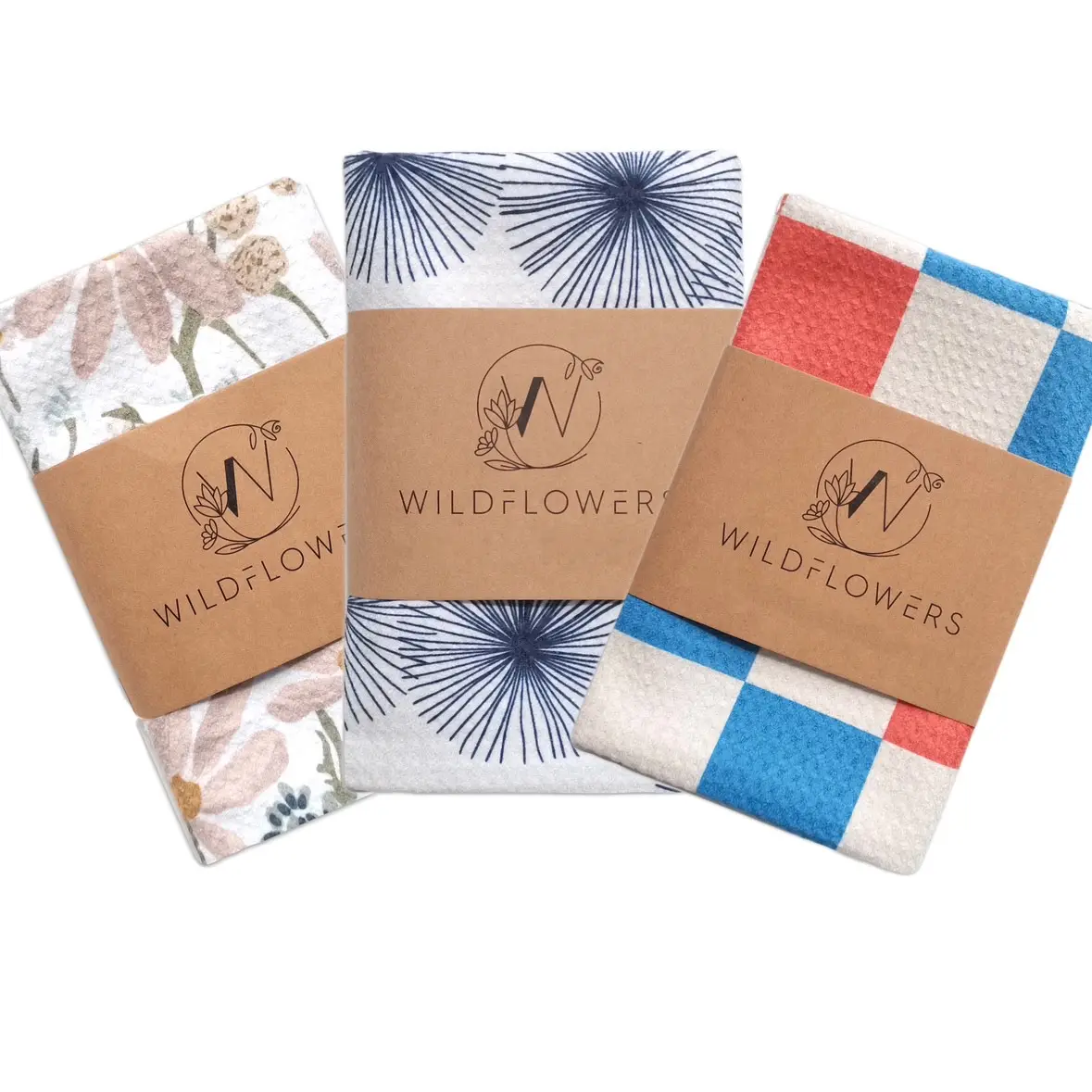The world of commercial tea towels might seem straightforward at first glance, but successful B2B buyers know that selecting the right tea towels can significantly impact their business operations. Whether you're purchasing for a hotel chain, restaurant group, or hospitality establishment, understanding the crucial elements that make up quality tea towels is essential for making informed procurement decisions.
Making the right choice involves carefully evaluating multiple factors, from material composition to durability standards. Smart buying decisions can lead to substantial cost savings over time while ensuring customer satisfaction and maintaining operational efficiency. Let's explore the critical aspects that every B2B buyer should consider when sourcing tea towels for their business.
The foundation of any quality tea towel lies in its material composition. Pure cotton remains the gold standard for commercial tea towels, offering superior absorbency and durability. Egyptian cotton, with its long fibers, provides exceptional softness and longevity, while organic cotton appeals to environmentally conscious establishments.
Turkish cotton, known for its rapid drying capabilities, has gained popularity in commercial settings. Its unique fiber structure allows for maximum absorption while maintaining a lightweight feel, making it ideal for high-volume usage environments.
Modern tea towels often incorporate blended materials to enhance performance characteristics. Cotton-polyester blends offer improved durability and wrinkle resistance, crucial for establishments requiring a consistently professional appearance. These blends typically maintain good absorption qualities while extending the product lifespan.
Innovative textile technologies have introduced microfiber blends that combine exceptional drying capabilities with lint-free performance. These advanced materials can be particularly valuable in settings where streak-free drying is essential, such as high-end restaurants and hotels.
Professional tea towels must withstand frequent washing and daily use while maintaining their functional properties. GSM (grams per square meter) serves as a crucial indicator of fabric density and durability. Commercial-grade tea towels typically range from 190 to 300 GSM, with higher values indicating greater durability and absorption capacity.
Reinforced edges and double-stitched hems significantly extend product lifespan, preventing fraying and maintaining structural integrity through numerous wash cycles. These construction details directly impact the total cost of ownership and should be carefully evaluated during the procurement process.
Commercial tea towels must endure industrial washing conditions without deteriorating. High-quality products maintain their shape, size, and absorption properties even after hundreds of wash cycles. Color fastness becomes particularly important for branded tea towels or those used in front-of-house operations.
Understanding wash cycle specifications helps in projecting replacement schedules and calculating long-term costs. Superior tea towels should withstand temperatures up to 60°C (140°F) while retaining their essential characteristics.

Tea towel dimensions significantly impact their utility in different commercial settings. Standard sizes typically range from 45x65cm to 50x70cm, but specific applications may require custom dimensions. The weight of the tea towel affects both handling efficiency and drying capacity, making it crucial to balance these factors based on intended use.
Larger establishments often benefit from maintaining an inventory of different sizes to address various needs efficiently. Kitchen staff generally prefer lighter weights for continuous use, while front-of-house applications might prioritize presentation and durability over weight considerations.
While functionality remains paramount, appearance plays a crucial role in certain commercial environments. Classic check patterns help mask stains while maintaining a professional look. Solid colors, particularly white, allow for bleaching when necessary and project a clean, crisp image.
Brand consistency considerations may influence color selection, particularly for establishments where tea towels are visible to customers. Some businesses opt for custom-branded tea towels as part of their marketing strategy, requiring careful consideration of design durability through repeated washing.
Strategic bulk purchasing can significantly reduce per-unit costs while ensuring consistent supply. Large-scale buyers should negotiate long-term contracts with suppliers, potentially incorporating price protection clauses to guard against market fluctuations. Understanding minimum order quantities and storage requirements helps optimize inventory management.
Consider implementing a rotating stock system to maintain optimal tea towel performance while maximizing investment return. This approach ensures even wear across the inventory and helps predict replacement needs more accurately.
Beyond initial purchase price, calculating the total cost of ownership involves considering multiple factors. These include expected lifespan, washing costs, replacement rates, and labor efficiency impacts. Higher quality tea towels might command premium prices but often deliver better value through extended service life and superior performance.
Tracking performance metrics helps refine future purchasing decisions and validate investment in premium products. Consider implementing a monitoring system to track wash cycles, replacement rates, and user feedback.
Commercial tea towels typically need replacement after 100-200 wash cycles, depending on usage intensity and care practices. Regular inspection for signs of wear, decreased absorbency, or fraying edges helps determine optimal replacement timing. Implementing a rotation system can help extend overall lifespan.
For commercial applications, tea towels with 190-300 GSM provide the best balance of durability and functionality. Higher GSM values offer better absorption and durability but may require longer drying times and higher laundering costs.
Maintain strict washing protocols including high-temperature washing (60°C/140°F minimum), appropriate detergent use, and thorough drying. Implement clear usage guidelines, regular rotation schedules, and proper storage practices. Consider color-coding systems to prevent cross-contamination between different areas of operation.